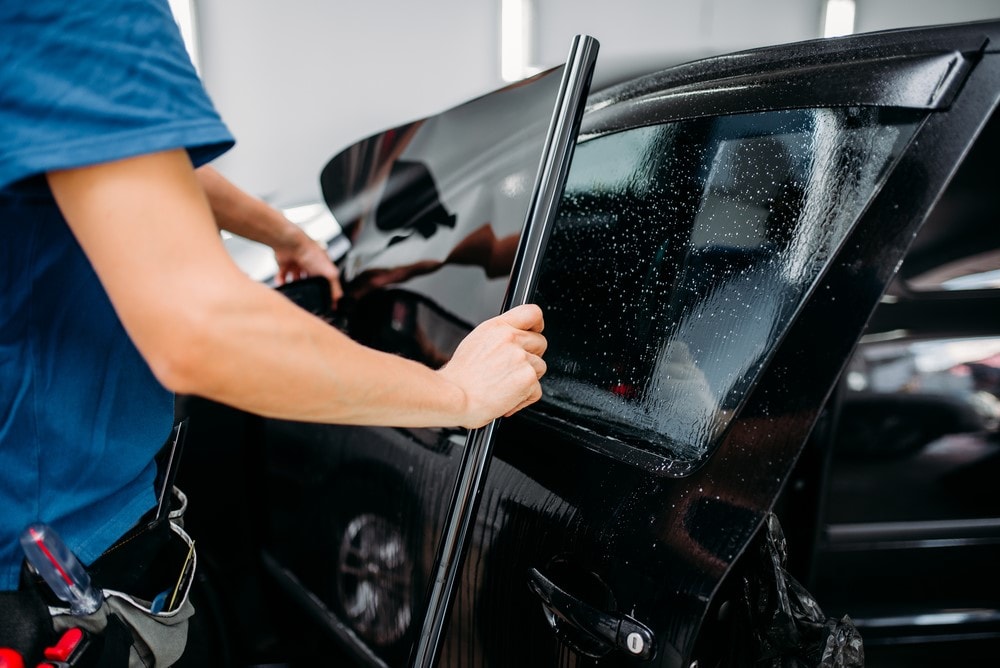Home Window Tinting Laws and Guidelines: What You Need to Know Prior To Tinting Your Vehicle
Prior to waging window tinting for your lorry, it is necessary to acquaint on your own with the varied regulations and standards that regulate this method throughout various states. These laws determine the permissible degrees of color darkness, typically determined by noticeable light transmission (VLT) portions, and consist of certain specifications for front windshields focused on making sure roadway safety. Furthermore, specific territories may provide clinical exceptions for people with certifying problems. Recognizing these complexities can conserve you from possible lawful ramifications, however what are the details regulations in your state?
Summary of Home Window Tinting Laws
Window tinting legislations are regularly subject to variation across various jurisdictions, showing neighborhood guidelines and safety and security considerations. These regulations dictate the permissible degrees of tint darkness and reflectiveness on car home windows, ensuring that drivers maintain sufficient visibility while also shielding against hazardous UV rays and warm.
Most regulations classify window tinting based on the Visible Light Transmission (VLT) percentage, which shows the amount of light that can pass through the home window. Usually, reduced VLT percents symbolize darker colors. Regulations usually separate between the front, side, and rear home windows, with more stringent constraints put on the front windscreen to boost safety for both the motorist and other roadway users.
Furthermore, some territories impose constraints on the reflectivity of the tint, protecting against extreme glow that can impair exposure. Exceptions to these laws might exist for individuals with details clinical conditions needing additional sunlight defense. Conformity with home window tinting guidelines is critical, as offenses can cause penalties, compulsory elimination of the tint, and possible rises in insurance policy costs. Therefore, it is vital for automobile proprietors to familiarize themselves with regional regulations prior to waging home window tinting installations.
State-by-State Tint Regulations
Recognizing the certain home window tinting guidelines in each state is crucial for automobile owners looking for to abide with the regulation. Each state in the U.S. has established its very own set of guidelines regulating window tinting, which can vary considerably. These policies frequently dictate the permitted levels of color darkness, the kinds of home windows that can be tinted, and any type of medical exemptions that may apply.
As an example, states like The golden state have rigorous limitations on color darkness for front home windows, while others, such as New Mexico, might enable darker tints. In addition, specific states mandate certain exposure portions for various home windows, including the windscreen, front side windows, and rear windows. It is important for cars and truck owners to acquaint themselves with their state's laws to stay clear of potential penalties or fines.
Moreover, some states may require a qualification sticker to be positioned on tinted home windows, indicating compliance with state laws. Failure to adhere to these laws not only risks lawful consequences yet can likewise affect security and exposure while driving. Lorry owners must carry out comprehensive research study or get in touch with regional authorities to make sure complete understanding and conformity with state-by-state tint guidelines.
Allowed Tint Types and levels
Numerous lorry proprietors may be stunned to discover that permitted tint degrees and types differ extensively throughout different states. Each state has established its own regulations concerning the allowable darkness and reflectivity of window color, commonly gauged by Visible Light Transmission (VLT) portions. VLT describes the amount of light that can go through the colored home windows; thus, a lower percentage suggests a darker tint.

In addition, the kinds of color materials permitted can vary, with some states restricting metallic or mirror-like surfaces. It is important for car owners to familiarize themselves with their state's certain laws to ensure conformity. Non-compliance can cause fines, compulsory removal of the tint, or various other lawful repercussions, making it critical to recognize these laws prior to waging installment.
Medical Exemptions for Tinting
While not all states give allowances for clinical exceptions pertaining to home window tinting, those that do acknowledge the requirement for certain browse around this web-site individuals to improve presence and convenience as a result of medical conditions. Different medical conditions, such as lupus, skin cancer, and particular eye disorders, can make people especially conscious sunlight. These individuals may call for darker colors to secure themselves from harmful UV rays and glow.

It is necessary to keep in mind that despite a medical exemption, there might still be constraints on the degree of tint enabled. Compliance with state regulations makes sure that people are both safeguarded and within lawful limitations. Those thinking about clinical exemptions must contact their neighborhood Division of Motor Vehicles or equivalent authority to recognize the treatments and needs necessary to obtain an exception efficiently.
Fines for Non-Compliance
Falling short to comply with home window tinting regulations can result in substantial charges, which differ by state. Police are equipped to provide citations for lorries that do not follow the defined tinting regulations. These fines usually include fines, which can vary from modest total up to several hundred dollars, depending on the extent of the infraction and the state in concern.
In some jurisdictions, repeated offenses might lead to rising fines or additional fines, such as obligatory court looks. Furthermore, non-compliance may necessitate the elimination of illegal tinting, commonly at the proprietor's expenditure. In severe instances, habitual offenders may encounter suspension of their car enrollment until compliance is attained.
Furthermore, insurance policy ramifications might develop from receiving several citations for home window color offenses. Insurance firms may check out such infractions as an indication of riskier habits, possibly bring about raised premiums or difficulty in coverage.
To stay clear of these charges, it is critical for car proprietors to acquaint themselves with their neighborhood home window tinting laws and guarantee that their automobile complies (Window Tinting). This positive method not just prevents legal implications yet additionally advertises roadway safety
Conclusion

Most guidelines redirected here identify window tinting based on the Visible Light Transmission (VLT) portion, which indicates the amount of light that can pass via the window. Compliance with home window tinting policies is vital, as offenses can result in fines, compulsory removal of the tint, and possible rises in insurance policy costs.Recognizing the specific window tinting policies in each state is important for lorry owners seeking to conform with the law. These laws typically dictate the allowed levels of tint darkness, the types of windows that can be you could check here tinted, and any type of clinical exceptions that may use.
For instance, states like The golden state have rigorous limitations on tint darkness for front home windows, while others, such as New Mexico, might allow darker colors.